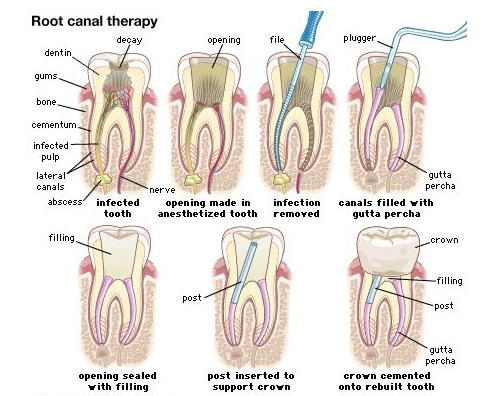
Root canal treatment is a dental procedure that is necessary when the pulp of a tooth becomes infected or inflamed. The pulp is the soft tissue that is found inside the tooth, and it contains blood vessels, nerves, and connective tissues.
When the pulp becomes infected or inflamed, it can cause a range of symptoms, including pain, swelling, and sensitivity to hot or cold foods and drinks. If left untreated, the infection can spread to the surrounding teeth and gums, causing further damage and pain.
Root canal treatment is needed to remove the infected or inflamed pulp and to prevent the infection from spreading. The procedure involves several steps, and it is typically done under local anesthesia to ensure that the patient is comfortable throughout the process.
The first step in the procedure is to create an opening in the tooth, which provides access to the pulp. Once the pulp is exposed, it is carefully removed using specialized instruments. The root canals, which are small channels that extend from the pulp to the tips of the tooth roots, are then cleaned and shaped to prepare them for filling.
Next, the root canals are filled with a biocompatible material called gutta-percha. This material helps to seal the canals and prevent further infection. A temporary filling is then placed in the tooth to protect it while a permanent filling or crown is prepared.
Finally, a permanent filling or crown is placed on the tooth to restore its function and appearance. The type of restoration used will depend on the extent of the damage to the tooth and the location of the tooth in the mouth.
In summary, root canal treatment is needed when the pulp of a tooth becomes infected or inflamed. The procedure involves removing the infected or inflamed pulp, cleaning and shaping the root canals, filling the canals with a biocompatible material, and restoring the tooth with a permanent filling or crown. If you are experiencing symptoms of a dental infection, it is important to seek prompt treatment to prevent further damage and pain.





